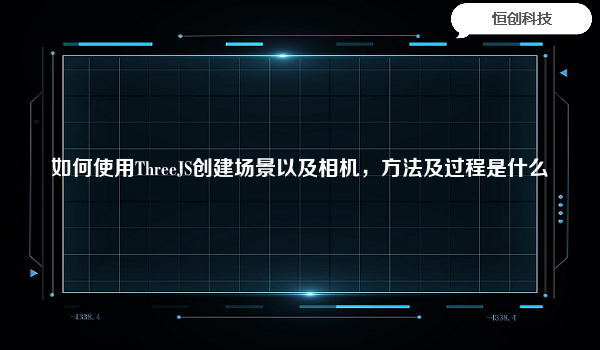前言
最近公司要做一个2.5D插件,然后自己学旋转角度不太好,然后就使用了THREEJS, 用起来还是比较繁琐的,整体支持不太好,整体都是自己研究,看到写的不好地方勿怪
创建场景以及相机
首先,要创建一个场景,以及一个相机(相机分为透视相机和正交摄像机,区别在后面会解释),代码如下
export default class ThreeComponent extends React.Component<any, any> {
private mount: any
private camera: any
private scene: any
private renderer: any
componentDidMount() {
this.init()
this.renders()
}
init = () => {
// 相机
this.camera = new THREE.PerspectiveCamera(30, this.mount.clientWidth / this.mount.clientHeight, 1, 2500)
this.camera.position.set(500, 800, 1300)
this.camera.lookAt(30, 0, 0)
// 场景
this.scene = new THREE.Scene()
this.scene.background = new THREE.Color(0x000000)
this.renderer = new THREE.WebGLRenderer({ antialias: true, alpha: true })
this.renderer.setClearColor(0xEEEEEE, 0.0)
this.renderer.setPixelRatio(window.devicePixelRatio)
this.renderer.setSize(this.mount.clientWidth, this.mount.clientHeight)
this.mount.appendChild(this.renderer.domElement)
window.addEventListener('resize', () => this.onWindowResize.bind(this))
}
onWindowResize = () => {
this.camera.aspect = this.mount.clientWidth / this.mount.clientHeight
this.camera.updateProjectionMatrix()
this.renderer.setSize(this.mount.clientWidth, this.mount.clientHeight)
this.renders()
}
renders = () => {
this.renderer.render(this.scene, this.camera)
}
render() {
return (
<div id='canvas'
style={{ width: '100%', height: '100%' }}
ref={(mount) => {
this.mount = mount
}}/>
)
}
}
创建一个平面
相机和平面创建完成,接来下我这边是直接创建一个平面放到场景中,代码如下

const geometry = new THREE.PlaneGeometry(800, 400)
// 设置透明以及颜色
const material = new THREE.MeshBasicMaterial({ color: 0x091A20, transparent: true, opacity: 0.8 })
const plane = new THREE.Mesh(geometry, material)
// 这边操作的是旋转还是位置
plane.rotation.x = 300.1
plane.rotation.y = 0
plane.rotation.z = 49.8
plane.rotation.y = 0
plane.position.x = 120
plane.position.y = 200
this.scene.add(plane)
添加图片
const image = require('../../assets/images/test.png').default
// 因为添加图片加载是异步的,所以在load方法中操作,每次加载之后都要执行一遍renders方法,重新渲染场景
new THREE.TextureLoader().load(image, (texture) => {
// 设置透明度,以及基础材质的map
const mat = new THREE.MeshBasicMaterial({ map: texture, transparent: true })
const geom = new THREE.BoxGeometry(100, 100)
const mesh = new THREE.Mesh(geom, mat)
mesh.receiveShadow = true
mesh.rotation.z = 19.7
mesh.position.x = 0
mesh.position.y = -30
// 往plane平面中添加,这样就可以直接放到plane中,位置就是plane的位置
plane.add(mesh)
this.renders()
})
创建线
首先要说,因为正常ThreeJs的line不能设置线宽,所以要用到的MeshLine,github地址为: MeshLine
// 这里引入MeshLine
import { MeshLine, MeshLineMaterial, MeshLineRaycast } from 'three.meshline'
const mat = new THREE.MeshBasicMaterial({ map: texture1, transparent: true })
const boxGeom = new THREE.BoxGeometry(60, 150)
const mesh = new THREE.Mesh(boxGeom, mat)
const mat1 = new THREE.MeshBasicMaterial({ map: texture2, transparent: true })
const boxGeom1 = new THREE.BoxGeometry(60, 150)
const mesh1 = new THREE.Mesh(boxGeom1, mat1)
const point = []
point.push(mesh.position) // mesh的位置
point.push(mesh1.position) // mesh1的位置
// 点对点的线
const line = new MeshLine()
line.setPoints(point)
const lineMaterial = new MeshLineMaterial({
color: new THREE.Color(0xffffff),
lineWidth: 10,
transparent: true,
opacity: 0.5
})
// 添加线
const lineMesh = new THREE.Mesh(line.geometry, lineMaterial)
plane.add(mesh)
plane.add(mesh1)
plane.add(lineMesh)
// 更新完之后在执行一遍render,把东西渲染到画布中
this.renders()
添加轴线
const axesHelper = new THREE.AxesHelper(800)
this.scene.add(axesHelper)
缩放、定位、以及旋转
// 缩放功能对应mesh进行缩放,每个mesh添加后都有固定的position, rotation, scale 属性
mesh.position.set(x, y, z)
mesh.rotation.set(x, y, z)
mesh.scale.set(x, y, z)
// 也可以这样, scale, rotation 都可以这么设置
mesh.position.x = 0
mesh.position.y = 0
mesh.position.z = 0
添加文字
添加文字使用threeJS官方的添加文字需要导入json文件,而且还需要中文配置,所以使用起来占用内存会比较大,所以当前项目中使用的是Canvas导入文字图片
//创建canvas
const canvas = document.getElementById('text-canvas') as HTMLCanvasElement
const ctx = canvas?.getContext('2d') as any
canvas.width = 100
canvas.height = 100
ctx.fillStyle = 'transparent'
ctx.fillRect(0, 0, 100, 100)
ctx.fillStyle = '#FFFFFF'
ctx.font = `normal ${attr.fontSize ?? 14}px "楷体"`
ctx.fillText(text.length > 5 ? text.substr(0, 5) + '...' : text, 0, 40)
// 导出图片路径
const url = canvas.toDataURL('image/png')
// 设置图片位置等信息
new THREE.TextureLoader().load(url, (texture: any) => {
const textGeom = new THREE.PlaneGeometry(200, 200)
const mat1 = new THREE.MeshBasicMaterial({
map: texture,
transparent: true
})
const mesh1 = new THREE.Mesh(textGeom, mat1)
mesh1.position.set(attr.x, attr.y, attr.z)
if (attr.rotation !== undefined) {
mesh1.rotation.set(attr.rotation.x, attr.rotation.y, attr.rotation.z)
}
mesh1.scale.set(0.8, 0.8, 0.8)
if (attr.group !== undefined) {
attr.group.add(mesh1)
plane.add(attr.group)
} else {
plane.add(mesh1)
}
this.renders()
})
正交摄像机和透视摄像机的区别
这边画图的话我就不画了,这块只是稍微的解释一下,具体的可以看一下搜到的文章:正交相机的应用
简单来说
正交摄像机的特点就是:场景中远处的物体和近处的物体是一样大的 透视摄像机的特点就是:场景中物体遵循近大远小的摆列,如果物体在最近,物体相对就会比较大下面就是怎么使用这两个相机:
// 透视摄像机
this.camera = new THREE.PerspectiveCamera(30, this.mount.clientWidth / this.mount.clientHeight, 1, 2500)
// 正交摄像机
this.camera = new THREE.OrthographicCamera(width / -4, width / 4, height / 4, height / -4, -100, 10000)
透视摄像机PerspectiveCamera属性介绍(以下都是个人理解,如果有不清楚的欢迎指出):
正交摄像机OrthographicCamera属性介绍:
角度计算:
如果设计刚好给你出了一个图,表示3d的位置等,这块需要一个角度计算,就需要改动摄像机的位置,以及lookAt属性:
this.camera.position.set(x, y, z)
this.camera.lookAt(x, y, z)
这个属性的设置需要自己设置(目前算法还不太了解,之后可能了解了会更新一下),把自己想象成一个摄像机,摆在哪里看到的效果都是不一样的,然后lookAt就是你眼睛看哪个位置,可以看的偏移一点这样的效果
总结
以上就是关于“如何使用ThreeJS创建场景以及相机,方法及过程是什么”的介绍了,感谢各位的阅读,希望这篇文章能帮助大家解决问题。如果想要了解更多知识,欢迎关注恒创科技,小编每天都会为大家更新不同的知识。






.png)

.png)

